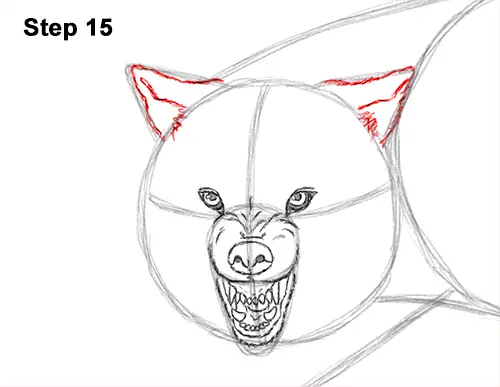
Step 15: Use the triangle-like shapes on top of the growling wolf's head as guides to draw the ears. First darken the outside shape using wavier lines, then add quick, short strokes inside for the fur. Draw the other ear the same way. Add a longer line in the middle of each shape to indicate the ear opening.
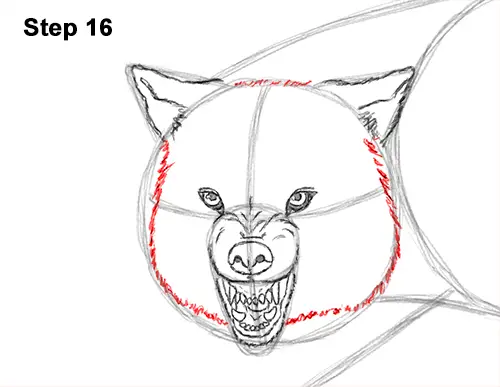
Step 16: Follow the basic path of the initial circle to draw the head. Use quick, short strokes for a furry texture. The top part of the head (closer to the eyes) should be narrower than the intial circle. The bottom part of the head should be wide and touch the edge of the initial circle. You can use longer strokes as you draw the shape of the head for shaggier fur.
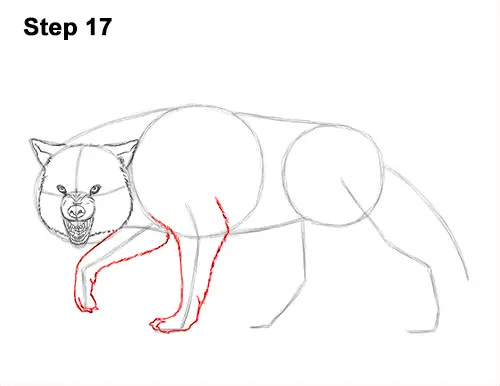
Step 17: Use the lines on the left side of the body as guides to draw the growling wolf's front legs. Lightly sketch the shape of the legs as you follow the path of the guide line. When you get the shape right, darken the lines using a series of quick, short strokes to indicate fur. The top part of the leg should be thick and get get narrower toward the bottom. The top part of the leg should bend. Add a curved line at the tip of the foot to indicate the two visible toes.
Now draw the front leg on the other side of the wolf's body by using the left-most line as a guide. Sketch the leg lightly as you follow the basic path of the guide. Darken the lines only when you get the shape right. Add a few curved lines at the tip of the foot for the toes. The toes should point down, and the foot should sort of dangle loosely as the wolf steps forward.
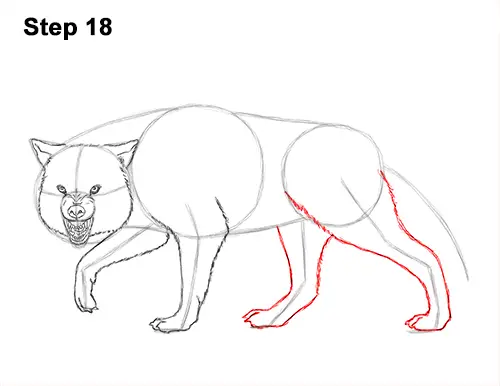
Step 18: Use the lines to the right as guides to draw the growling wolf's hind legs. Sketch lightly as you follow the basic path of the guide to create the shape of the leg. Make the top part wide. Pay attention to how the leg bends at the joints. Darken the lines when you have the shape right. Add a curved line at the bottom for the toes. The foot is facing forward, so only a couple of toes will be visible from this angle. Use quick, short strokes at the top of the leg for the longer fur found there.
Use the other line as a guide to draw the final leg. Remember to sketch lightly at first. When you get the shape of the leg right, darken the lines. Use quick, short strokes near the top for the fur. Use a curved line at the tip of the foot to create the toes and bend the leg where the joints are located.
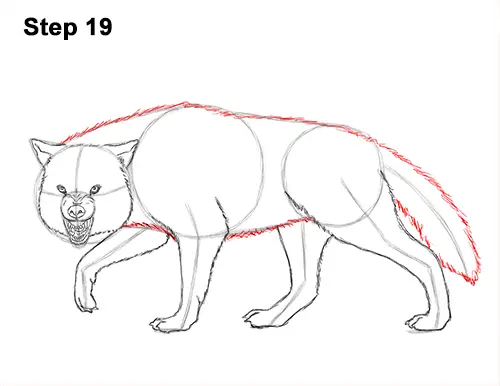
Step 19: Use the remaining lines as guides to draw the rest of the growling wolf's body and tail. Darken the outer edge of the guides using quick, short strokes to create the furry body. Use longer strokes on the underbelly to create a shaggier texture there. Use the curved line on the far right as a guide to draw the tail. Use quick strokes around the guide to create the tail. Make the base thinner and the bottom part wider.
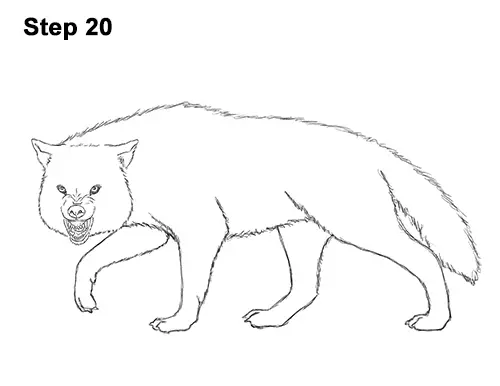
Step 20: For a cleaner look, erase as much as you can of the initial guide lines. Don't worry about erasing all of the guides. It's okay to leave some behind. Re-draw any final sketch lines that you may have accidentally erased.
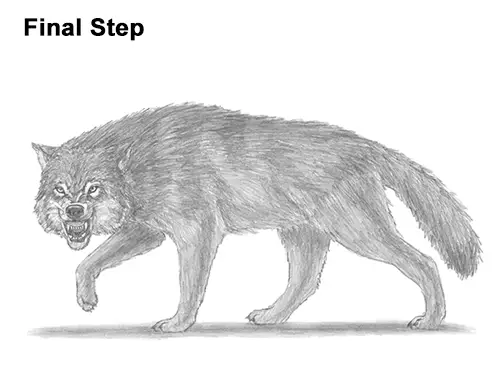
Final Step: Add some shading to your growling wolf drawing to give it more dimension and volume. Pick the direction of the light source when shading so that the shadows are consistent with it. Vary the pressure on your pencil to get different degrees of tonal value. As you add the shadows, use strokes that go in the general direction of the fur. You can stop here for a white wolf or you can skip the shadows and just use a single dark value all over the body for a black wolf.
Add a cast shadow underneath. This helps ground the wolf so it doesn't appear to be floating.
You can add even more value throughout your drawing for extra detail. Use shorter stokes when you add the value to the wolf's head as opposed to the longer strokes you will use for the body. Leave the space above and below the eyes blank for the white fur found there. The wolf's muzzle and the lower half of the face should be pretty white too, so add only a very light value there. As you add the value, separate each individual stroke a bit so that the white of the paper comes through and creates a furry-looking texture.
Adding the value can be very time- consuming, so be patient and take breaks. You can add the value to different sections of the body at a time to break up the shading process. Don't worry about shading too smoothly. The rough value gives the wolf's coat a furry texture. Instead focus on adding the strokes in the basic direction that the fur should go. The strokes on the torso should basically have a horizontal orientation, then gradually turn vertical toward the legs. Push harder on certain sections of the torso to give the fur a dark and light pattern.
Notice how the strokes start with a basic horizontal orientation on the body. They then gradually turn clockwise the closer they are to the bottom until they're more or less vertical on the legs. Use downward strokes for the wolf's tail as well. You can go through the body one more time and darken the dark values a bit more if you'd like. Just remember to separate each individual stroke a bit to get that furry look, and allow some of the paper's white to come through. It's always a good idea to use reference as you draw for a more accurate wolf. Don't forget to pause the video after each step to draw at your own pace.
Thanks for watching! Subscribe to the How2DrawAnimals YouTube Channel for a new tutorial every Tuesday.
To learn how to draw popular cartoon characters, visit EasyDrawingTutorials.com.
RELATED TUTORIALS
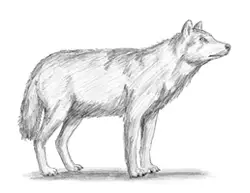 |
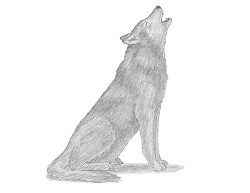 |
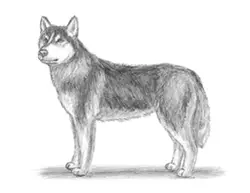 |







